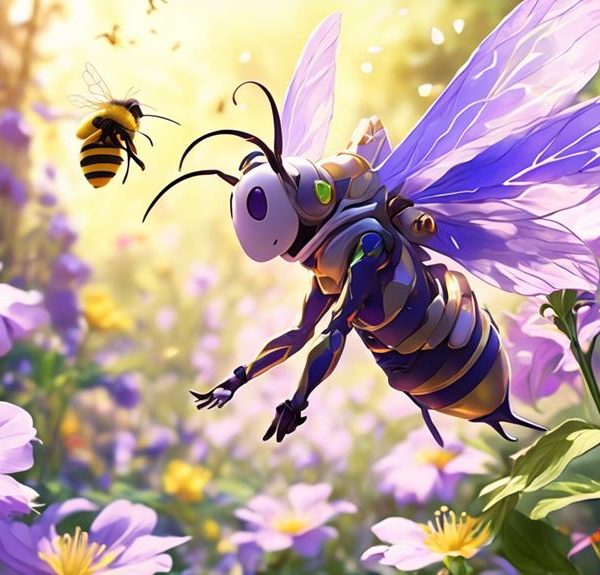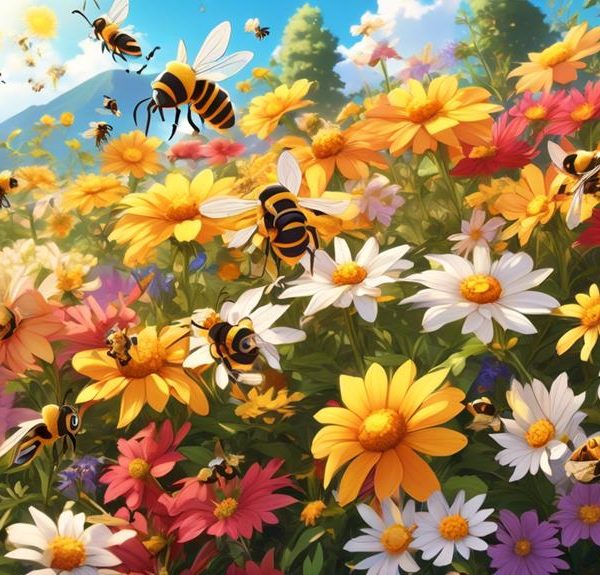Investigate the intriguing relationship between bees and bergamot flowers and uncover the secrets of their mutual attraction.
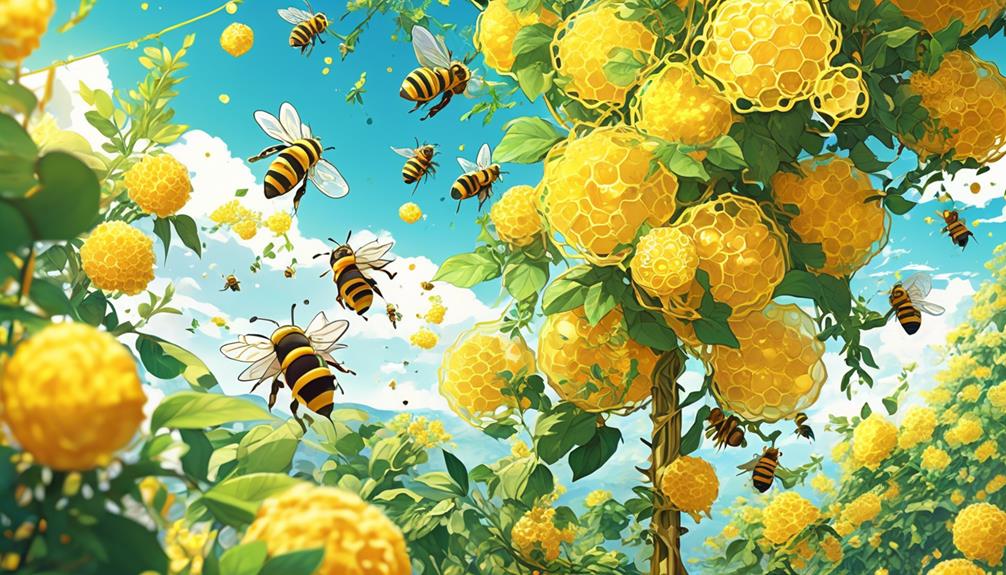
Do Bees Like Bergamot
Imagine you're a gardener, aiming to attract more bees to your backyard, and you've just planted a new bergamot flower.
Over time, you notice an influx of bees buzzing around this colorful, fragrant addition. But is it a coincidence, or do bees truly have a preference for bergamot?
While it's common knowledge that bees are attracted to flowers, the specifics of their preferences can be a fascinating exploration into the world of these industrious insects.
Stay with us as we take a closer look at this intriguing relationship.
Key Takeaways
- Bees are naturally attracted to Bergamot due to its vibrant colors, intoxicating scent, and high nutritional value.
- The symbiotic relationship between bees and Bergamot facilitates cross-pollination, ensuring the plant's reproduction and genetic diversity.
- Planting Bergamot can contribute to bee conservation efforts by providing essential nutrients for bees, encouraging their pollination activity, and supporting biodiversity in the ecosystem.
- Practical tips for gardening with Bergamot include providing full sun exposure, well-drained soil, proper spacing, regular watering, and deadheading faded flowers for prolonged blooming and bee attraction.
Understanding Bee Preferences
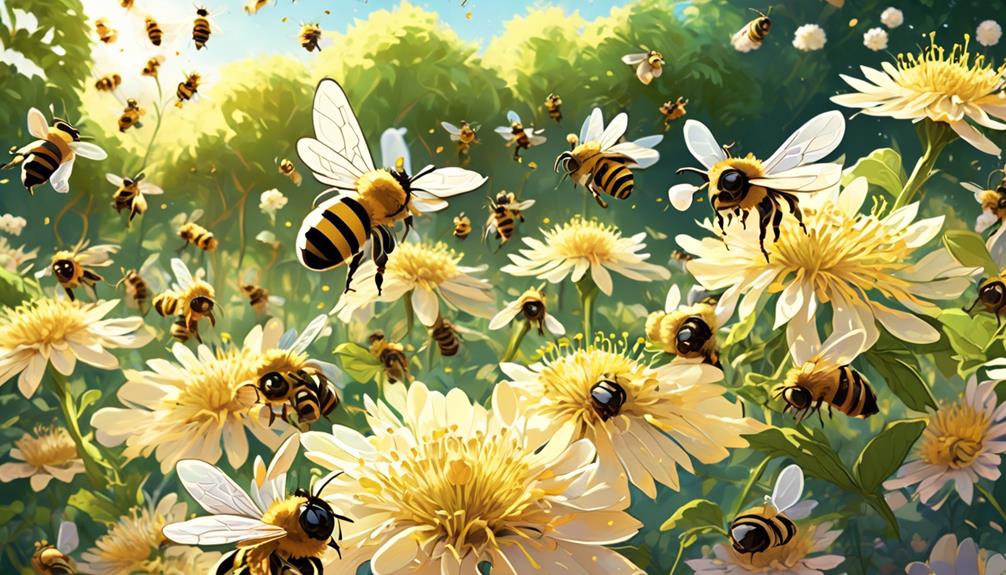
To better understand bee preferences, it's crucial to delve into their instinctual attractions, particularly their fondness for certain plants like Bergamot. As you may know, bees play a pivotal role in our ecosystem, acting as primary pollinators. However, not all plants are on their favorites list. They're naturally inclined towards specific types, with Bergamot being one of them.
Why Bergamot? Essentially, it's the plant's vibrant color and intoxicating scent that attract bees. It's almost as if Bergamot is a bee magnet. But you'll find it's not just about the physical attributes. Bees also favor the nectar and pollen of Bergamot due to its high nutritional value. They're discerning creatures, after all.
Now, you're not just observing bees hovering around Bergamot plants. You're understanding their preferences, deciphering their instincts. You're seeing beyond the surface-level interaction and getting a profound insight into bee behavior. Remember, every time a bee chooses to visit a Bergamot plant, it's making a choice, a decision based on instinct, survival, and preference. It's these intricate details that make understanding bee preferences both fascinating and essential.
The Allure of Bergamot
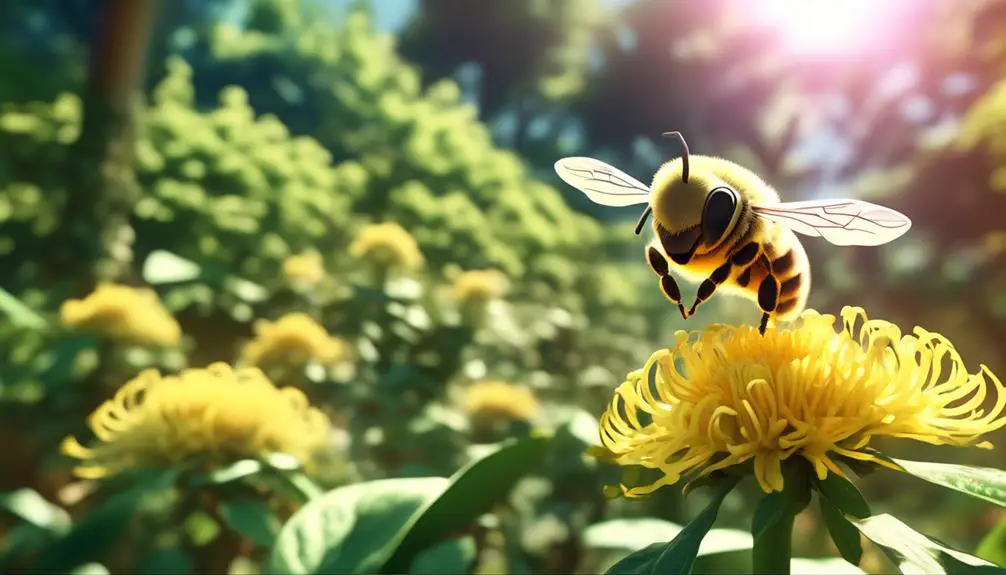
Diving into the allure of Bergamot, you'll quickly discover why bees can't resist this particular plant. This perennial herb, native to Europe, is renowned for its striking flowers, which range from pink to vibrant purple. It's a magnet that draws bees in, not just for its color but also for its intoxicating scent. Bergamot emits a unique, citrusy fragrance that bees find irresistible.
Analyzing the plant's nectar content, you'll find it's rich in sucrose, fructose, and glucose, providing an energy-packed feast for bees. Bergamot's plentiful nectar supply ensures bees return time after time, making it a reliable food source in your garden. The plant's structure also plays a part in its allure. Its tubular flowers with long, narrow throats are a perfect fit for bees' body shape, enabling them to access the nectar easily.
Beyond its physical attributes, Bergamot plays a crucial role in the ecosystem, attracting pollinators and promoting biodiversity. So, if you're looking to create a bee-friendly environment, incorporating Bergamot into your landscape can be an effective strategy. It's not just about the beauty it adds; it's about the life it supports. By understanding its allure, you're one step closer to creating a bee paradise.
Bees and Bergamot: A Relationship
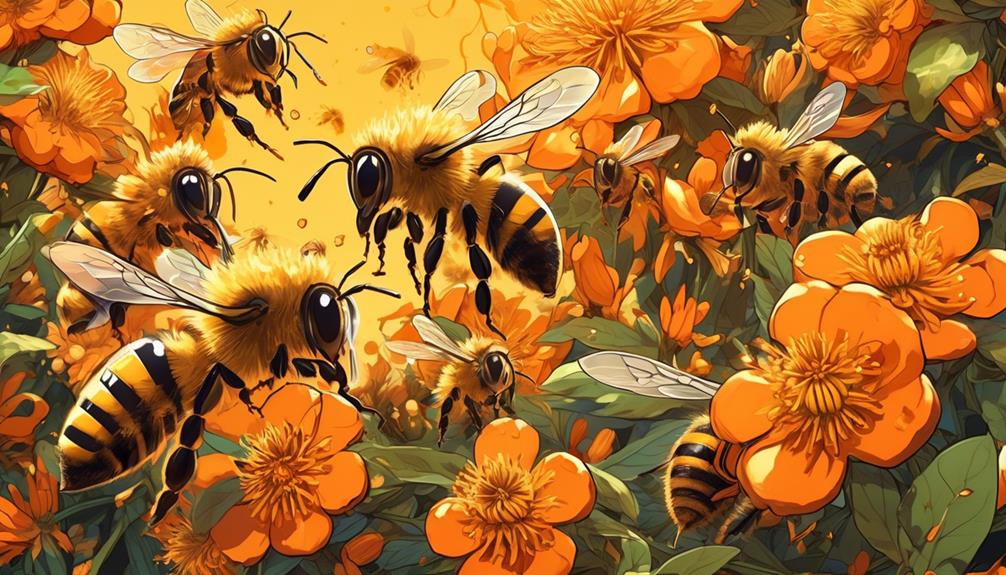
Understanding the allure of Bergamot brings us to the heart of its relationship with bees, a crucial interaction that fosters both the survival of the plant and the thriving of the bee population. Bees are drawn to Bergamot's vibrant colors and intoxicating aroma, ensuring their return to the plant for nectar. As they forage, they inadvertently collect pollen on their bodies, which gets deposited on other Bergamot flowers, facilitating cross-pollination. This symbiosis helps the plant reproduce and diversify genetically, ensuring its survival.
Concurrently, Bergamot's nectar provides essential nutrients for bees, aiding their survival and prosperity. The nectar's high sugar content fuels the bees' energy needs, while the pollen collected serves as a protein source, vital for feeding their young. Interestingly, the nectar also contains minute amounts of caffeine, which seem to enhance the bees' memory of the plant's location, encouraging repeated visits.
In essence, bees and Bergamot share a mutualistic relationship. Each organism benefits from the other's existence and activities, illustrating a perfect example of how interconnected and delicately balanced nature's systems can be. It's a relationship where survival and prosperity are intertwined, each reliant on the other's success.
Bergamot's Role in Bee Conservation
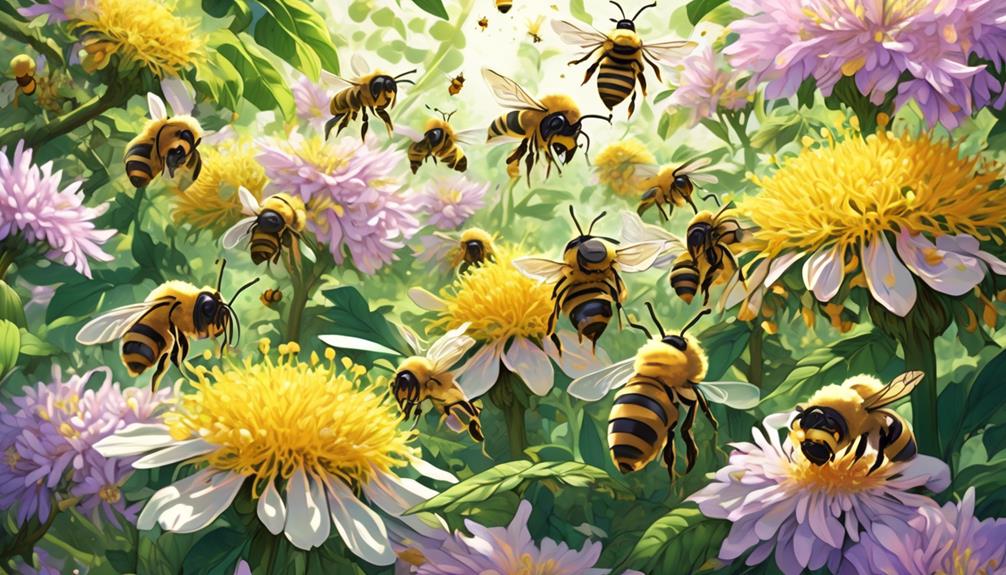
Given the increasing concern over bee populations globally, Bergamot's unique allure presents a significant opportunity for bee conservation efforts.
You see, bees are inarguably attracted to Bergamot, charmed by its vibrant color and scintillating scent. This attraction isn't just a fleeting infatuation, it's a fundamental aspect of bee survival. The nectar and pollen from Bergamot flowers provide bees with the essential nutrients they need for sustenance and colony growth.
But it's not just about survival. Bergamot's role in bee conservation extends beyond the hive. When bees collect pollen from Bergamot, they inadvertently aid in the plant's pollination, which in turn, encourages more Bergamot growth. It's this ongoing cycle of attraction, sustenance, and growth that creates a thriving ecosystem for bees.
You can leverage this natural affinity by incorporating Bergamot into your garden or local green spaces. By doing so, you're not just adding a pop of color, you're contributing to a global effort to save our precious bees.
Practical Tips for Gardening With Bergamot
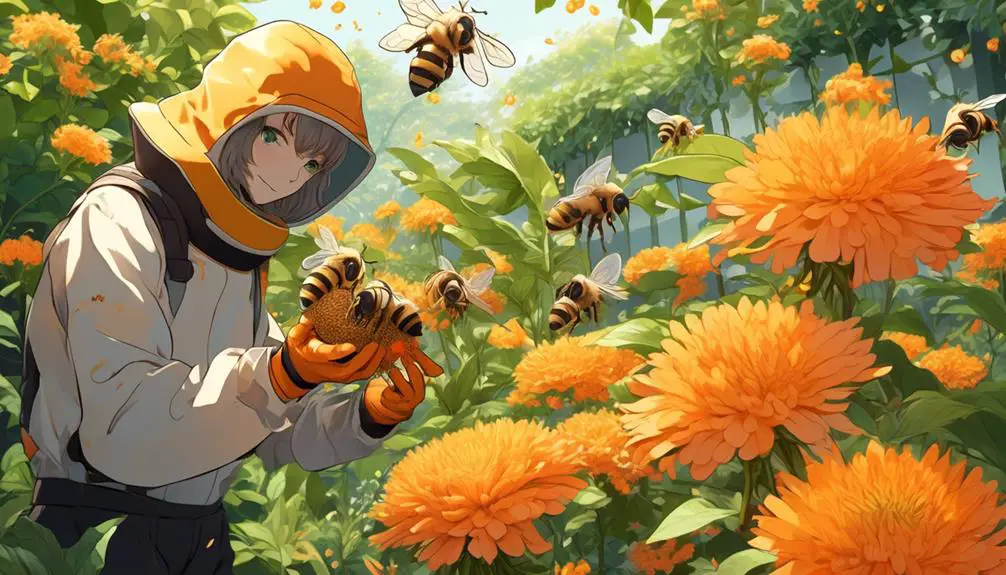
If you're keen to lend a hand in bee conservation, planting Bergamot in your garden can be an effective, eco-friendly strategy. However, to ensure your Bergamot plants thrive and attract bees, it's essential to understand the specific needs of this plant.
Bergamot prefers full sun exposure and well-drained soil. It's a hardy plant that can survive in a variety of soil types, but it'll flourish in slightly acidic to neutral pH levels. When planting, space your Bergamot about 18 to 24 inches apart to allow for adequate air circulation and growth.
Water your Bergamot regularly, especially during dry spells. However, be careful not to overwater as this can lead to root rot. Mulching around the base of the plant can help retain moisture and suppress weed growth.
Bergamot's vibrant, nectar-rich flowers are a magnet for bees. Deadheading, or removing faded flowers, encourages new blooms and extends the flowering period, providing a longer feast for bees.
Lastly, Bergamot is a perennial plant. It'll die back in winter but return in spring, making it a low-maintenance addition to your bee-friendly garden. With these tips, you'll not only be supporting bee populations but also creating a visually appealing and aromatic garden space.
Frequently Asked Questions
How Can I Safely Introduce Bergamot Into My Existing Garden Without Disturbing the Bees?
You're wise to consider the bees while introducing bergamot to your garden. Start slow, planting a few bergamot plants at first. This won't overwhelm the bees and they'll gradually get used to the new plant.
Also, plant in sections, not all in one spot, to maintain diversity and not disrupt their familiar environment.
Be patient, it might take a little while for the bees to start visiting the bergamot, but they'll likely adapt over time.
Could the Presence of Bergamot Cause an Increase in Bee Stings in My Garden?
You're wondering if bergamot could lead to more bee stings in your garden. While it's true that bergamot attracts bees, it doesn't necessarily mean they'll sting more. Bees usually sting to protect their hive, not while foraging. If you're not disturbing their hive, you're unlikely to be stung.
Are There Any Other Plants Similar to Bergamot That Bees Are Also Attracted To?
Yes, there are several plants that attract bees just like bergamot. For instance, lavender, sunflowers, and echinacea are a few favorites. They're drawn to these plants due to their vibrant colors and sweet nectar.
How Does the Climate or Region Affect the Relationship Between Bees and Bergamot?
Climate and region greatly impact the bee-bergamot relationship. In colder climates, you'll find bergamot doesn't thrive, thus limiting the bees' access. Warmer climates encourage healthy bergamot growth, attracting more bees.
The quality of soil also plays a role; nutrient-rich soil boosts bergamot, in turn luring more bees.
Does the Type of Bee Have an Impact on the Attraction to Bergamot?
Yes, the type of bee indeed affects its attraction to bergamot. Different bee species have varying preferences influenced by their physiological makeup and evolutionary adaptations. For instance, honeybees might be more attracted to bergamot than bumblebees due to their unique sensory capabilities.
It's fascinating how bee species diversity can impact plant-pollinator interactions. So, it's not just about whether bees like bergamot, but which types of bees do.
Conclusion
So, you've seen it yourself: bees love bergamot! This fragrant flower not only attracts bees with its alluring scent, but also plays a vital role in bee conservation.
If you're looking to give your local bee population a boost, consider planting some bergamot in your garden. It's a simple step that makes a world of difference.
Remember, a world with healthy bees is a world that thrives!

